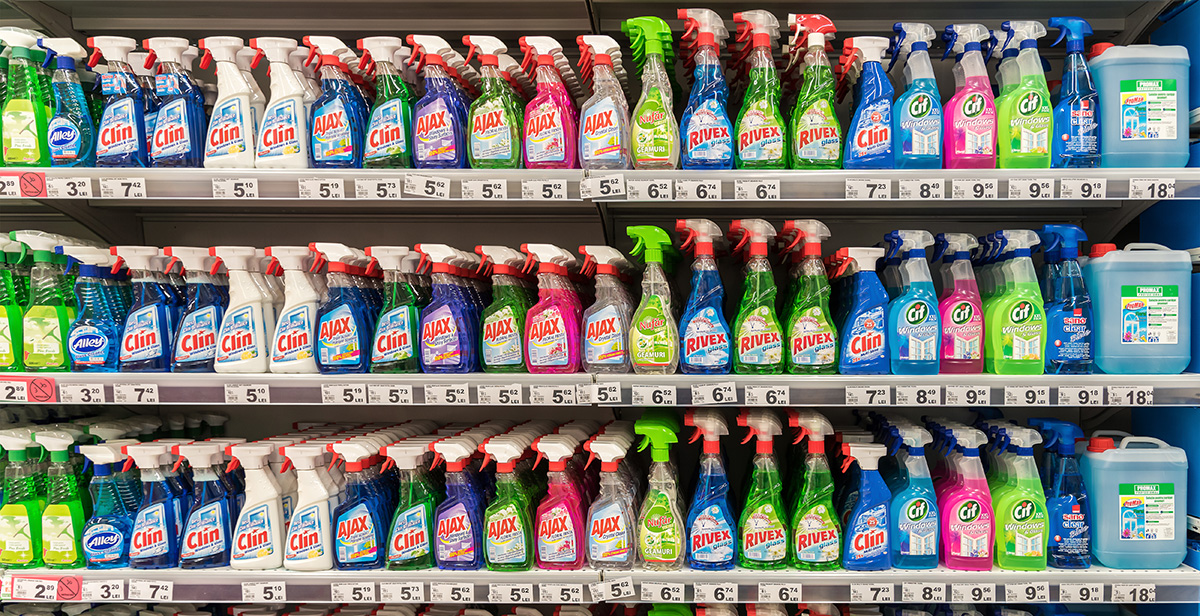10 Common Household Health Hazards

Cleaning products photo by Radu Bercan/Shutterstock
Chances are, you own nail polish remover, laundry detergent, mothballs, or a grill. What do these products have in common? They’re all sources of common household health hazards.
University of Rhode Island environmental health scientist Ted Myatt teamed up with Southborough company Honeywell to conduct a study of the most common volatile organic compounds (VOCs), or potentially harmful chemicals emitted from certain liquids or solids. Here’s what you need to know to keep your home healthy:
1. The most common VOCs are:
- Terpenes, which are found in scented products like soaps and detergents.
- Ethanol, a solvent in cleaning products like dishwashing and laundry detergent.
- Benzene and toluene, associated with gasoline and paints.
- Formaldehyde, found in particleboard, floor lacquers, and molded plastics.
- Carbon disulfide, found in chlorinated tap water.
- Dichlorobenzene, a VOC that comes from deodorizers and moth balls.
- Butanol, which comes from tobacco products, cooking stoves, candles, and grills.
- Xylene, released in vehicle exhaust.
- Acetone, an agent in nail polish remover, furniture polish, and wallpaper.
2. Don’t freak out about VOCs…
“The saying goes that the dose makes the poison,” Myatt says. “There is some level below which exposure to some of these things where there’s no known health effects.” In other words: Using nail polish remover every so often is not going to kill you.
3…but they could cause some health problems.
Myatt says VOCs have the most immediate effect on people with asthma or other respiratory problems. “If you have asthma, if you have a child with asthma, VOC exposures have been associated with exacerbation of allergic symptoms and that sort of thing,” he explains.
At higher levels, VOC exposure could cause headaches and eye, nose, and throat irritation. At extreme levels, such as working in a nail salon for a long period of time, the presence of VOCs has been linked to cancer. Benzene is particularly risky, Myatt says.
4. There are simple ways to reduce your exposure.
Myatt suggests making a few easy changes, such as buying low- or no-VOC versions of consumer products when available, using the hood on your stove, storing and using products that contain VOCs outside, and using air purifiers in your home.
Again, there’s probably no need to throw out every can of paint and container of scented soap in your house; it’s just good to control your exposure when possible. “You may not need to go crazy,” Myatt says. “I don’t personally go crazy in my home.”


